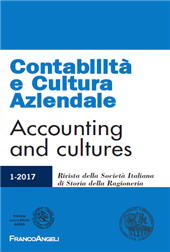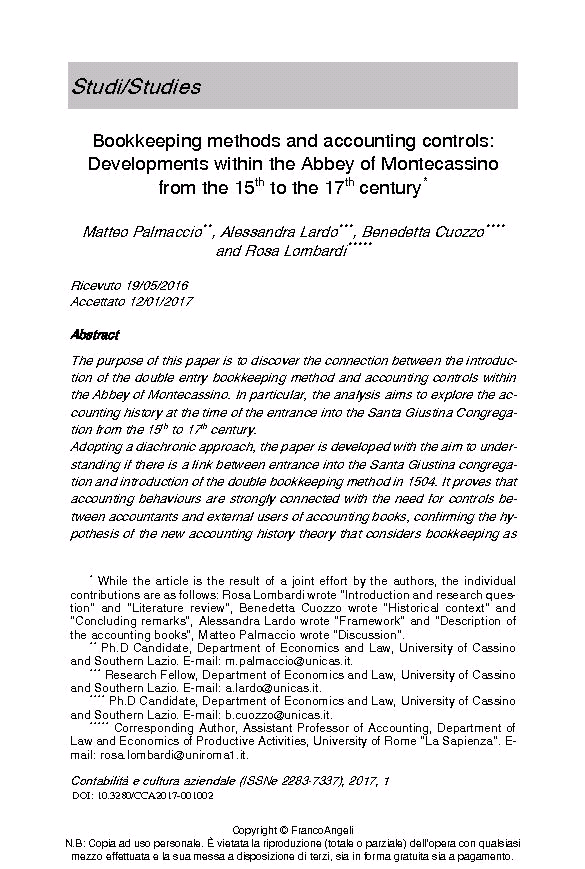2017 - Franco Angeli
Articolo
Versione Digitale
Download | Copia/incolla | Stampa
Bookkeeping methods and accounting controls : developments within the Abbey of Montecassino from the 15th to the 17th century
7-27 p.
- The purpose of this paper is to discover the connection between the introduction of the double entry bookkeeping method and accounting controls within the Abbey of Montecassino. In particular, the analysis aims to explore the accounting history at the time of the entrance into the Santa Giustina Congregation from the 15th to 17th century. Adopting a diachronic approach, the paper is developed with the aim to understanding if there is a link between entrance into the Santa Giustina congregation and introduction of the double bookkeeping method in 1504. It proves that accounting behaviours are strongly connected with the need for controls between accountants and external users of accounting books, confirming the hypothesis of the new accounting history theory that considers bookkeeping as social construction.
- The methodology is based on a comparison between two different methods of recording in the Abbey of Montecassino: the first refers to the period from 1450 to 1504 (Commendatory era) while the second considers the period after entrance into the Santa Giustina Congregation in 1504. [Publisher's Text].
Fa parte di
Contabilità e cultura aziendale : rivista della Società Italiana di Storia della Ragioneria : XVII, 1, 2017-
Informazioni
Codice DOI: 10.3280/CCA2017-001002
ISSN: 2283-7337
PAROLE CHIAVE
- Monastery accounting history, bookkeeping methods, accounting controls, New Accounting History, Abbey of Montecassino, Santa Giustina Congregation
-
Nello stesso fascicolo
- Editoriale/Editorial : Accounting and Cultures : Enlarging the horizons
- Bookkeeping methods and accounting controls : developments within the Abbey of Montecassino from the 15th to the 17th century
- Alle origini delle discipline aziendali : l'opera di G.A. Tagliente
- Spigolature/Gleanings
- Notiziario/News ; Call for papers : Special Issue and Workshop Accounting in different cultures and from different perspectives



